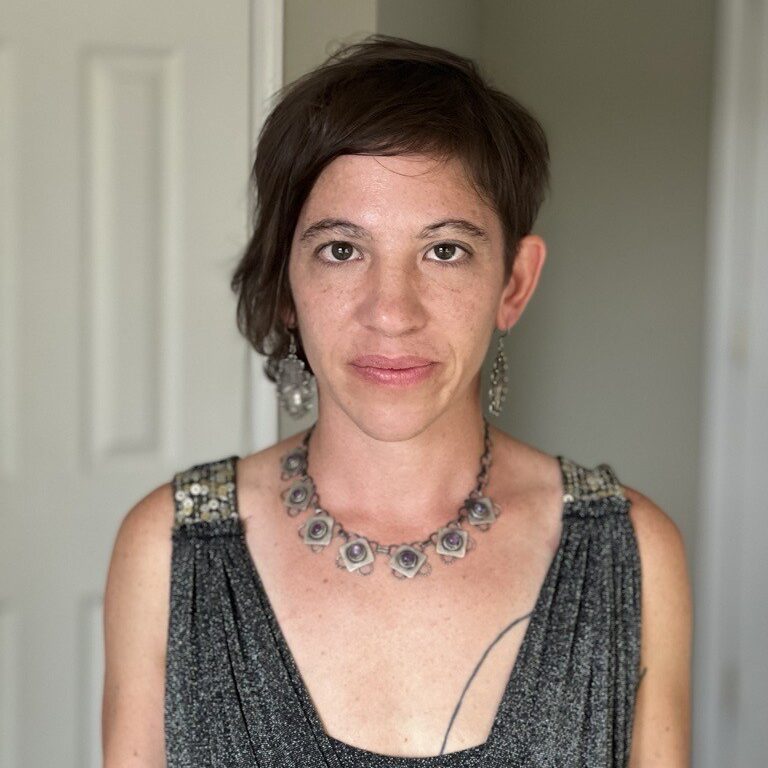‘It’s like trying to run a clinic on a foundation of quicksand,’ Maryland abortion provider says

Morgan Nuzzo, an advanced practice clinician nurse-midwife, started Partners in Abortion Care in College Park about a year ago with Dr. Diane Horvath, an OB-GYN who specializes in complex family planning. The clinic is among the few in the country that provides abortions in the third trimester of pregnancy. Abortions that late in pregnancy are rare and often sought because of health risks to the pregnant person or because of a fatal fetal diagnosis.
In June, Nuzzo and other abortion providers and reproductive health experts told States Newsroom that, with the end of Roe v. Wade, they had begun to see a rise in later abortions in the U.S. because of diminished access and increased wait times and costs. But surprisingly, Nuzzo said that in the last few months her clinic has seen a drop-off in patients seeking later abortions, something she suspects could be due to patients not being aware or informed of other options when they can’t access abortion in other states, or because they’re unable to travel.
Some things that haven’t changed, Nuzzo said, are the significant distances people are traveling to end their pregnancies and the high number of young children who need abortions but now can’t get them in their home states. In 2017, there were nearly 4,500 pregnancies among girls under 15, with about 44% ending in abortion, according to the Guttmacher Institute. The age of sexual consent in the majority of states is 16, according to the U.S. Department of Health and Human Services’ guide to statutory rape laws and reporting requirements. Few of the abortion bans enacted since Roe was overturned have exceptions for survivors of rape and incest, and those that do typically have specific police reporting requirements.
This interview has been edited for brevity and clarity.
States Newsroom: Has anything changed at Partners in Abortion Care since June?
Morgan Nuzzo: We actually saw a decrease in later abortion patients from July until very recently. We were booked out several weeks in the spring and early summer. And then there was just this dramatic drop-off. Last year some advocacy folks did some data, and they were like, [the need for later abortion is] going to increase like a hundredfold. So I’m not really sure how to reconcile that with the reality of what we were seeing. But you know, even in California and Washington and Oregon, people were saying that they were seeing less people.
We aren’t booking out now for appointments — we have availability next week. Whereas before [the wait time] was two to three weeks on average, sometimes as much as five. We were getting a little worried about where the patients are.
SN: Why do you think you’re seeing fewer later abortion patients?
Nuzzo: I think there are more patients, and they’re not able to get where they need to go. I think hospitals are potentially seeing people, which we’ve always asked them to do. I think that people are trying, are certainly navigating to safe clinics, and maybe have that on their mind that if they are pregnant, and they need an abortion, that they should not delay for any reason and are trying, you know, realizing that they might have to travel and willing to do that maybe more than they were before.
I wonder, too, it almost feels like there’s a wall in the middle of the United States now that kind of runs from one end to the other of places you can’t get an abortion. And I wonder if people aren’t finding us because they’re not going to places that refer to us. People don’t expect to need a later abortion, or an abortion after 28 weeks. And so I think sometimes when people are told that they’re further along in pregnancy, it’s just like, well, that’s the end. And maybe those referral lists aren’t getting into the hands of people. We’re doing our best to make sure that people know that people can still access later abortion care. It might not be legal in their state, but it’s certainly legal here in Maryland.
SN: How many patients are you seeing on average a week?
Nuzzo: Ten a week now.
SN: And what are the average gestational ages?
Nuzzo: Between 20 and 34 [weeks’ gestation]. And then we’ll see first-trimester patients, too. That would make a much higher number; we can see a lot more first-tri patients.
SN: How often are you turning people away, because they are too far along or for other reasons?
Nuzzo: Once a week. The very worst thing to do is turn somebody away who wants an abortion. It’s a terrible feeling to take someone’s choice from them. I’m not saying abortion is for everyone. Some people get here and they choose not to continue, and that’s wonderful. But to say, someone who wants to not be pregnant anymore, and to say, “You have no other options,” is a terrible thing to have to do to somebody.
SN: Where are your patients coming from?
Nuzzo: Very few are local. I mean, today we have somebody from California. People come from all over. People are still traveling very far to get to us. But it’s just fewer of them.
Things are changing constantly. We’re just waiting for this Florida ban to come. [Florida’s six-week abortion ban, signed earlier this year, has been blocked until the Florida Supreme Court rules on the constitutionality of the state’s current 15-week abortion ban.] We know when that happens that we’re going to get an influx of people from Florida. We already see a good number of people from Florida.
SN: How do you deal with patients from states like Texas and Idaho that are trying to prevent people from traveling or even learning about legal abortion care in other states?
Nuzzo: I mean, we talk to our Texas patients. You know, it’s not illegal in Maryland. We can tell them the services that they can get. We often do have to do some patient education with people while they’re here and be like, ‘You know if you go home, it’s illegal in your home state, right?’ I think some people know and some people don’t really.
I’m just trying to navigate all 50 states’ changing rules all the time. What other medical practice do you have where you’re worried that it’s illegal to talk to somebody on the phone from that state?
SN: The last time we talked, you said your patients range from 10 to 53 years old? What is the age range like now?
Nuzzo: Yeah, still the range. We see a lot of kids. A lot of kids.
SN: About many kids do you usually see a week?
Nuzzo: Usually one to two.
SN: What are the risks of children giving birth?
Nuzzo: Younger people have risks for things like preeclampsia. There’s an increased risk certainly for smaller people who have not gone through puberty completely and become their full adult size. Their pelvises are very small. We see folks up to 34 [weeks’ gestation], so we usually don’t turn those kids away. But sometimes they need to be seen in a hospital. And we’ve certainly consulted for people who are younger than people we’ve seen in clinic [meaning younger than 10 years old] who needed hospital-based care.
What do you think will be some of the lasting effects of the Dobbs decision?
Nuzzo: Birth rates will increase, and then we’ll see an increase in maternal mortality and infant mortality. Maternal mortality is going to go up. If we haven’t already seen it, we know that this is what’s going to happen. We’re already a country that does not take care of their pregnant people in the way that they should be cared for. Black people who are pregnant and give birth are more likely to die than their white colleagues.
People don’t have the access that they need. We know that OB-GYNs aren’t going to places to train where abortion’s restricted. So you’re limiting OB-GYN services and L&D [labor and delivery] services in these areas. Hospitals are already closing down L&Ds all across the country. It’s going to be a ripple effect, even for pregnant people who want to have deliveries.
SN: What are some of the challenges you’ve faced this year?
Nuzzo: When we think about the things that have happened post-Dobbs, it’s like, all of a sudden, everybody’s eyes opened to how the system is just built on the goodwill of people. There isn’t a system. It’s, you know, eight dozen people being like, “All right, I know somebody who knows somebody who knows somebody, let’s try and get this done.” And taking those calls, on the weekends and at night and at your kids’ soccer games.
You want to keep your team in good spirits and also understand that they are real people with real lives. And it’s hard to do this work when every day you wake up and find out a new headline of something horrible has happened. It’s like trying to run a clinic on a foundation of quicksand. And we’ve got the 2024 election coming up. It’s going to be a stressful year.
SN: I read recently that abortion funds have been getting fewer donations. Has that affected your clinic?
Yeah, funds are going dry earlier and earlier each month. We want your readers to know that they can support their local abortion fund. That money really, really matters. It’s not just going into this pot that’s not going anywhere; it’s going directly to patients so that they can get seen. We work with over 40 abortion funds, and we couldn’t do this without their support.
SN: Is there anything else you want to share with our readers?
Make sure that you have a plan if you or someone you love were to find out that they were pregnant and they didn’t want to be or couldn’t be.
And then, you know, we are always wanting to bust later abortion stigma and let people know that these are patients that never expect to be seen by us. And something has changed in their life. And now they need a later abortion. And they’re incredibly brave and strong and resilient for being able to get from wherever they are to us. It’s incredible the things that people have to do just to get to us. And when they come here, they’re often frustrated, but not because they need a later abortion, but because of how frustrating and how many barriers it took them to get here.




 Creative Commons Attribution
Creative Commons Attribution